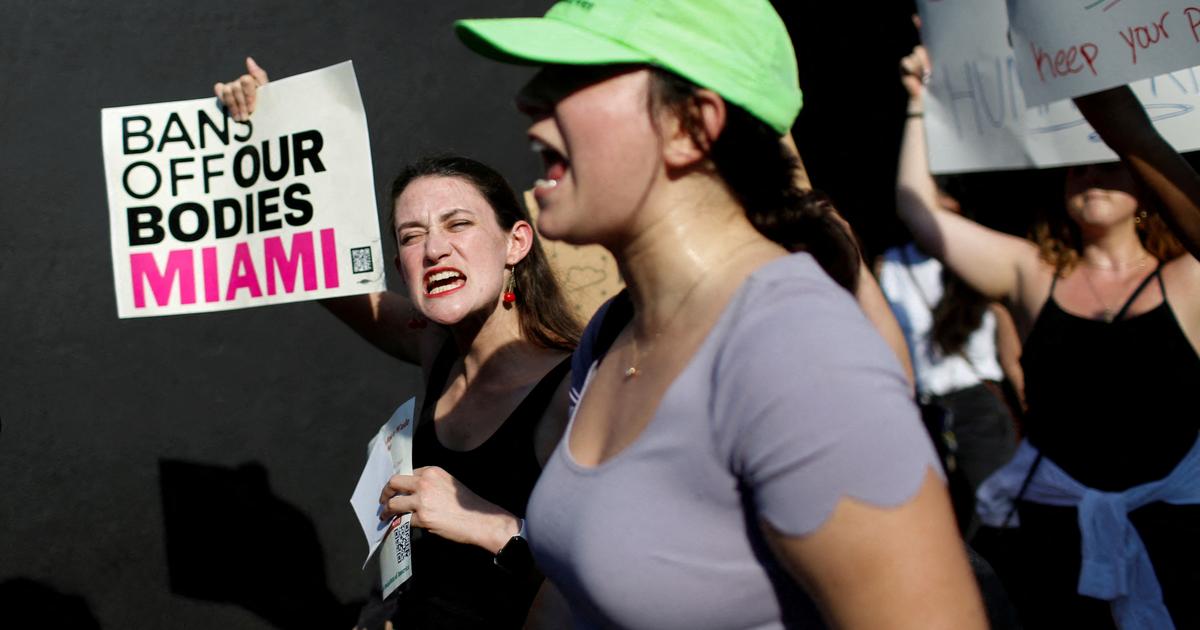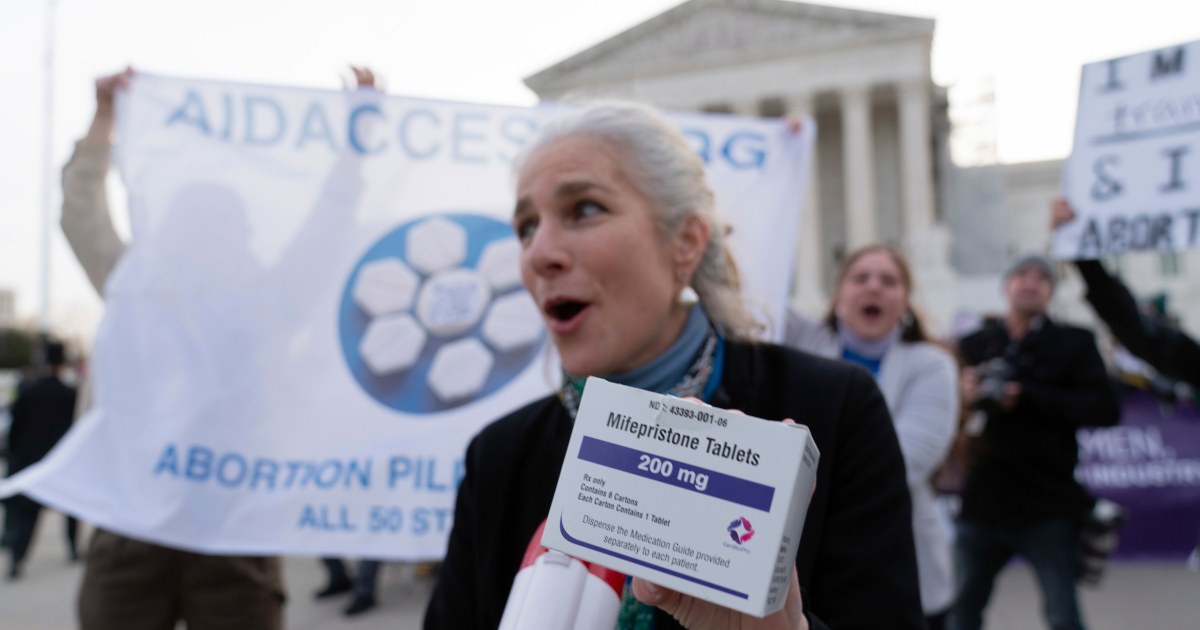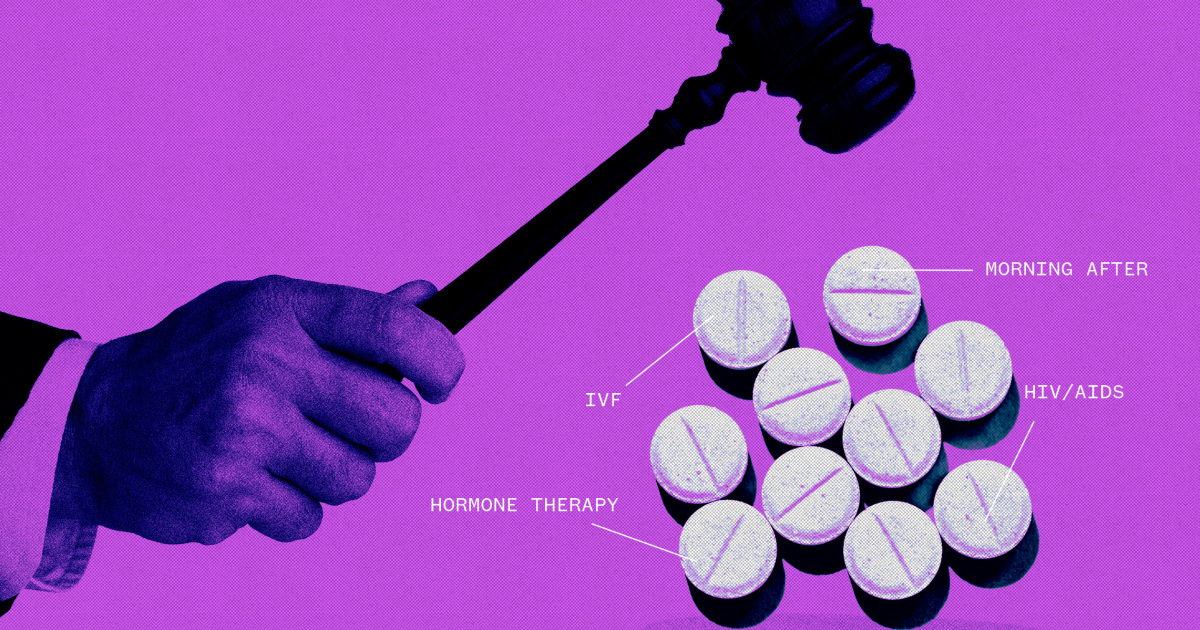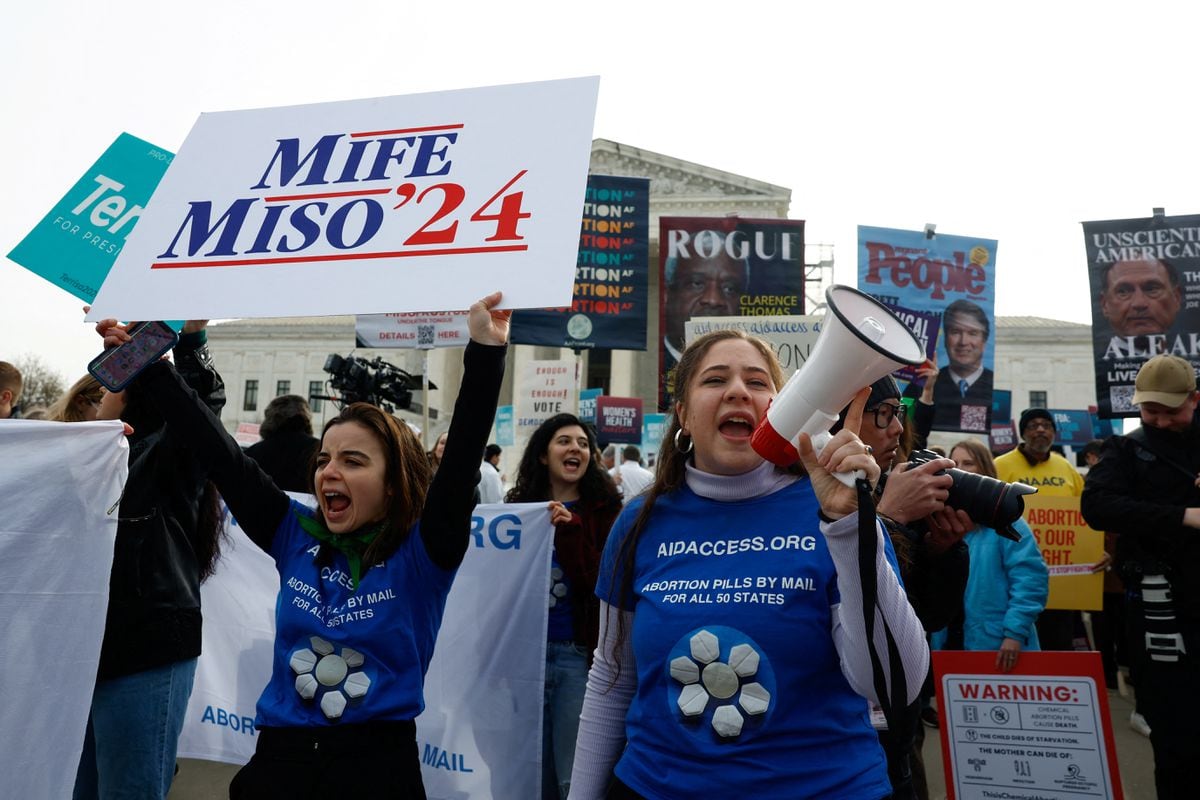Pro-abortion activists demonstrate outside the US Supreme Court building on June 13 in Washington. Anna Moneymaker (AFP)
The decision of the Supreme Court of the United States, with a conservative majority, to overturn the
case Roe v. Wade
(1973) splits the country in two when it comes to the possibility of accessing a legal abortion.
The States governed by the Republicans will be able to immediately prohibit the interruption, and even criminally prosecute women, while the Democratic territories reinforce their legislation to offer themselves as a refuge to those who cannot do so in their places of origin.
More than 36 million women will not be able to legally abort, and this will especially affect those belonging to racial minorities, marginalized groups and lower classes.
What is the reason for the Supreme Court ruling?
It pronounces on the abortion law in force in Mississippi since 2018, which prohibits interruption in most cases from the 15th week of gestation.
What cancels the sentence of the Supreme?
Two previous decisions, known as the
Roe v. Wade
(1973) cases, which established the constitutional protection of access to legal abortion in the country, and
Casey v. Planned Parenthood
(1992), which confirmed the previous one.
Does the Supreme Court now prohibit abortion in the US?
By overruling
Roe v. Wade
, the Supreme Court allows states to establish their own prohibitions and restrictions.
The ruling does not mean to prohibit the voluntary interruption of pregnancy (IVE) throughout the country.
The decision now rests with state and local legislators, and possibly with federal ones as well.
Do you set a deadline?
The Supreme Court will overturn previous court precedent that preempted state laws that ban abortion before the fetus is viable, around 23 weeks gestation.
What is the most common method of abortion in the US?
The abortion pill is the method used in 54% of abortions performed in the country, above surgery.
In 2017, the administration of the pill was used in only 37% of the interruptions.
If abortion is made illegal, can women who have one be detained?
Criminal responsibility for the practice of an abortion will depend on the policies of each State.
Leaders of major anti-abortion groups have said that women should not be prosecuted for having abortions, but recently passed laws, such as the one in Texas, do.
Several states that could become prohibitionist after the Supreme Court ruling exempt women from trial until now, but pro-abortion activists recall that, even during Roe's term, there have been women prosecuted for pregnancies that ended in miscarriage or stillbirth.
In Mississippi, a 1952 law that punishes women with up to ten years in prison will be reactivated.
What was the most restrictive legislation to date?
In September, Texas enacted a law that prohibits abortion from the moment a fetal heartbeat is detected, around six weeks gestation, before many women even know they are pregnant.
That is why it is known as
the law of the beat
.
Idaho was next, but the law was blocked by the state Supreme Court.
Recently, Oklahoma adopted even more restrictive legislation, which extends that of Texas by prohibiting termination from the moment of conception and also invites denunciation by individuals.
How many women of childbearing age will the ruling affect?
A negative sentence from the Supreme Court would leave in the air the access to a hypothetical interruption of pregnancy for the 36 million women of childbearing age who reside in 13 states of the country.
Those States have trigger laws (or
trigger laws
, as they are known in English) that would automatically prohibit abortion in the first and second trimesters after the decision of the Supreme Court.
In seven other states, illegalization may be imminent and in 10 more, access to legal abortion is in question, according to various sexual and reproductive health groups.
The country will be split in two: the prohibitionist states and another 20, in which 26 million women of reproductive age live, governed by Democrats.
Who will the Supreme Court restriction affect the most?
To women belonging to racial minorities, marginalized groups and lower incomes.
In the southern states, the most conservative, more than half of the women who aborted in 2019 were black and Hispanic, according to the Centers for Disease Control and Prevention (CDC; federal health agency).
Of the national total, almost 40% were under 25 years of age.
Women with financial resources can move to other States, including those that have offered themselves as a refuge, expanding the legislation to protect them and protect them legally (this is the case of the State of New York, among others).
How to enforce the new rules?
The prospect of prosecutors asking clinics for information to enforce the new bans is a major concern for activists.
This is established, for example, by the Texas law, which also criminally prosecutes anyone who participates in an interruption (the taxi driver who takes the woman to the clinic, for example), in addition to promoting the denunciation.
But how far local prosecutors will go to enforce abortion restrictions is an unanswered question.
Until now, what went into the abortion ban depended on the political environment, including the local environment in which prosecutors navigated.
Some prosecutors in Democratic-leaning jurisdictions are promising not to pursue criminal charges under the new restrictions.
Are there alternatives for women who wish to abort?
Following the passage of the Texas law last September, thousands of Texans traveled to neighboring states to terminate their pregnancies.
The State of New York has just adopted a package of laws to protect patients and healthcare providers from legal actions brought outside the State, for example by denying their extradition.
New York is the closest state where you can get an abortion for between 190,000 and 280,000 women from other territories, according to calculations by state legislators.
How many abortions are performed each year in the US?
The number of voluntary terminations of pregnancy increased 8% between 2017 and 2020, according to the Guttmacher Institute, a research group on sexual and reproductive health.
In 2020, 930,160 abortions were performed in the US, up from 862,320 in 2017. 20.6% of pregnancies were terminated in 2020, compared to 18.4% in 2017. The figure varies by state.
Mississippi, for example, registered an increase of 40% in cases in that period, and Oklahoma, 103%.
In Missouri they fell 96% in that period.

/cloudfront-eu-central-1.images.arcpublishing.com/prisa/S42RLPRSGHCDWQFWHOIZUSFUOI.jpg)





/cloudfront-eu-central-1.images.arcpublishing.com/prisa/OCS7V4Q6YKB6UMI76BXPPNGQJE.jpg)

